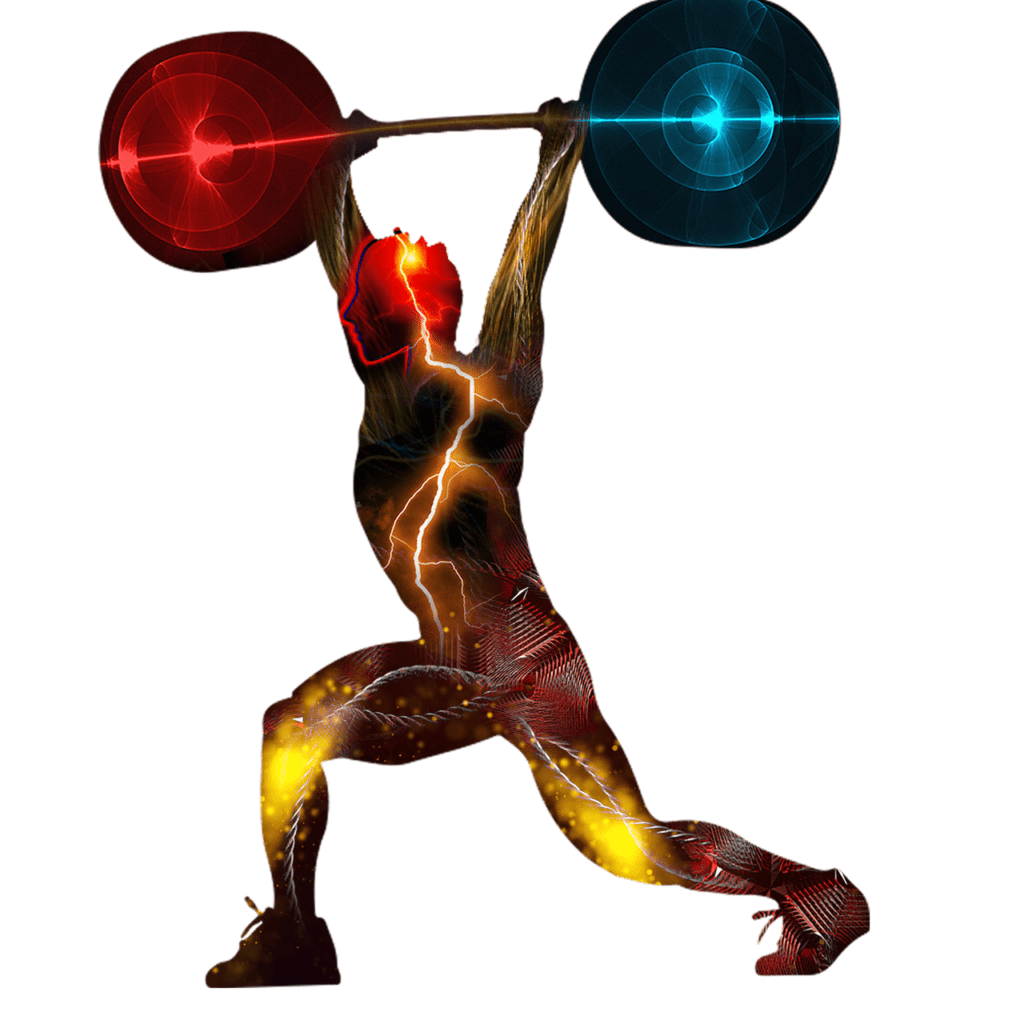Weightlifting is an Olympic sport that consists of two lifts. The lifts in Weightlifting are the Clean and Jerk and the Snatch. These lifts, and their variations are commonly referred to as Olympic Lifting. They are great for generating high power outputs and developing power in athletes. That is, so long as they are performed with a sufficient level of technical competence. In Weightlifting for track and field athletes, technique is imperative for optimal performance.
Power development is an important aspect of the training of all Track and Field athletes. As such, weightlifting movements have become a very popular component of strength and conditioning programmes for Track and Field athletes. This is great for athletes who are technically competent in weightlifting. For athletes who are not technically competent, weightlifting movements may not be ideal.

Alternatives to Weightlifting in Track and Field
Instead a simple squat jump can be a superior means of developing power in athletes. According to the mechanical output hypothesis, athletes produce more power when performing maximal effort squat jumps without external load. This means bodyweight squat jumps are superior for power production compared to loaded squat jumps. This makes maximal effort squat jumps for height a very safe, accessible and effective method of developing power in athletes. Technique is simple and easy to teach. No equipment is required, since power production is actually greater when external resistance is not used. These considerations make squat jumps a very attractive alternative to the Olympic Lifts when it comes to developing power.
The olympic lifts require a high level of technical competence in order to fully benefit. In contrast, bodyweight squat jumps are very simple and effective. This makes squat jumps a viable alternative to the olympic lifts. Despite this, we should still consider how weightlifting movements might fit into strength and conditioning programmes for track athletes:
Weightlifting for Track and Field Athletes
Weightlifting Derivatives for Track and Field
There are two main reasons why Weightlifting for Track and Field athletes is still worthy of consideration.
Reason number one is that we do not have to perform the full version of lifts seen in competitive weightlifting. We can break the Olympic Lifts down into smaller components or derivative exercises. Breaking the lifts down into smaller derivatives can make them easier to learn. Of course there is likely to be a compromise here. A well executed derivative of the Clean will have less potential for generating power compared to a well executed full version of the lift. However, if the full version of the lift is not executed with good technique, then it is likely that the smaller derivative movement will have the greater potential for power development (and be safer too).
Breaking down the Olympic Lifts into smaller derivative components is arguably the best way of learning the full versions of the lifts. So an athlete might begin by performing derivatives of the Olympic Lifts. This is for two reasons. Firstly, because that is currently the best option for the athlete for power production. Secondly, because the derivatives will help the athlete to learn the full lifts. As a result, that same athlete may eventually end up performing the full Clean and Jerk and the full Snatch lifts. The process of learning the derivative movements has enabled them to develop a greater level of competence in the full lifts.
More Than Just Power for Track and Field
There is a second reason why Weightlifting is still worthy of consideration for Track and Field athletes. It is that the Olympic Lifts have more to offer Track and Field athletes than simply developing power.
Granted, power development is probably the biggest reason for using the Olympic Lifts. But there is more to it than that.
There is actually a very high level of Dynamic Correspondence between Weightlifting and Track and Field activities (in particular, running and sprinting).
Weightlifting movements can be crudely split into two parts. Part one is the pull phase. The bar is lifted off the floor until a point of full extension has been achieved. This is triple extension of the hip, knee and ankle joints, plus a shrug of the shoulders to maximise bar height. Part two is the catch phase. The lifter drops underneath the bar as rapidly as possible in order to receive the bar. It is received at either shoulder height (Clean lift) or at arms length overhead (Snatch lift).
The pull phase of the lift requires high levels of force generation through a triple extension movement pattern. The catch phase of the lift does not result in such high levels of force generation. It requires very high movement velocities in the exact opposite of the movement pattern for the pull phase (triple flexion of the hip, knee and ankle joints).
So to summarise the biomechanical nature of the Olympic Lifts. They require a forceful and powerful triple extension of the hip, knee and ankle (pull phase). This is immediately followed by a rapid triple flexion of the hip, knee and ankle joint (catch phase).
Powerful Triple Extension and Rapid Triple Flexion
This corresponds precisely to the biomechanical characteristics of high speed running.
In the ground contact phase of sprinting or high speed running, there is a requirement for high levels of triple extension forces to be produced through the hip, knee and ankle joints. This must then be immediately be followed by a rapid triple flexion of those same three joints in order to efficiently move the leg through the recovery or swing phase of the running stride.
It’s hard to think of any other gym based movements that have that same level of biomechanical similarity with sprinting.
Of course, this level of Dynamic Correspondence can potentially be lost, to an extent, when performing derivatives of Olympic Lifts.
Common Weightlifting Derivatives
A common (and useful) derivative to perform is the explosive triple extension from mid thigh. This is sometimes referred to as the mid thigh pull. In this exercise, the catch phase is deliberately left out of the lift. This makes it easier to perform well, as there are less components to think about. Once technique has been developed, it is possible to load this derivative up with a lot of weight. This generates very high levels of triple extension force. But the opportunity to train the quick transition from forceful triple extension to rapid triple flexion is lost.
Another common (and useful) derivative to perform is the drop clean exercise. In this exercise, the idea is to quickly drop underneath the bar without having performed the preceding pull phase. Once again, it has the benefit of there being fewer components to think about. On this occasion, the exercise is useful for developing high movement speeds in the triple flexion movement pattern. But, again, it no longer provides the opportunity to train the quick transition from forceful triple extension to rapid triple flexion.
Piece it Together With Hang Cleans
Time needs to be spent developing technical competence in the above two derivatives. When this is done, it is not much more of a step to begin performing hang cleans.
Hang cleans involve the pull phase and the catch phase of the Olympic Lifts placed together into one exercise. The distinguishing characteristic of hang cleans is that they are not initiated from the floor. They are initiated from around knee level. But at first, I would recommend initiating the lift from mid thigh level. This is the position from which your athletes will have been performing their explosive mid thigh pulls.
It is easier to perform a hang clean with good technique compared to performing a clean from the floor. Over time, as technique develops, you can gradually lower your starting position. You can use blocks of different heights as a means of doing this in a measurable way. Or alternatively, if performed in a power rack, you can gradually lower the height of the safety bars.
However, there is arguably little additional benefit of performing Cleans from the floor compared to performing Hang Cleans. Peak power may eventually be a little higher if performing Cleans from the floor. However, the difference in power output between hang cleans and cleans from the floor is unlikely to be very large. There is no reason to rush the progression from performing cleans from hang position to performing cleans from the floor. If an athlete were to only ever perform Hang Cleans and never progress to the floor that would be fine. In many cases it would be preferable.
So there you have it! Tim’s lowdown on Olympic Lifting for Track and Field athletes!
Tim Egerton – York Personal Trainer
The EGG
Egerton’s Garage Gym
Foxwood Personal Training
York
